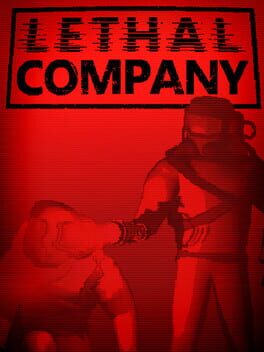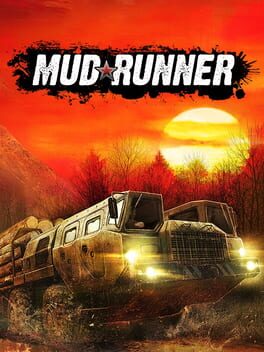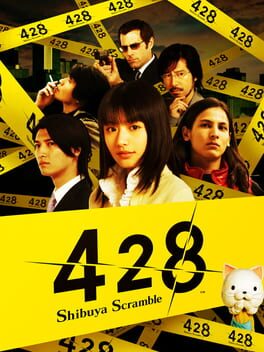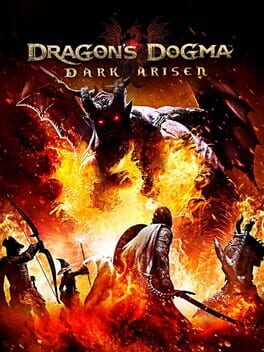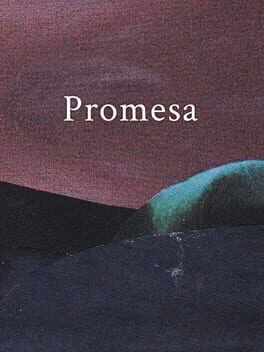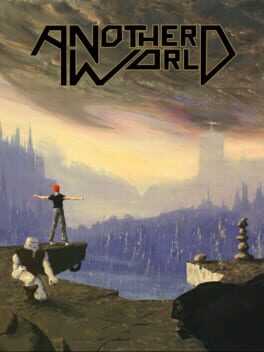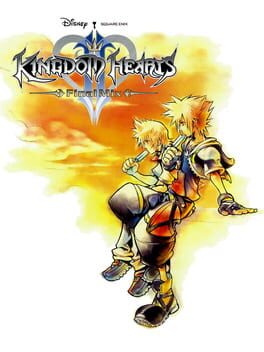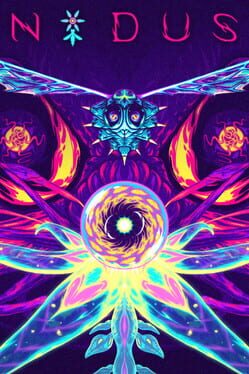rubenmg
2023
That the most oppressive dungeons to memory barely have any enemies is already surprising, that the fear is tangible even when not a single monster is encountered is exceptional. It is not just the great atmosphere designed to overwhelm (the darkness, the narrow corridors, the labyrinths, the ambiguous noises) but the craving for which, originally, any dungeon calls for adventure. Search for treasures (or scrap…) and try to control the craving for that one more bit as the time limit approaches, the monsters multiply and the risk of losing absolutely everything looms around the corners. A necessary craving, because money is needed to keep playing, and encouraged, because the more you get, the more you can buy to have easier incursions. With the variety of threats to encounter, the behaviors and ways of dealing with each monster being notably different, and the randomness of each round, there is no safe plan.
To finally find the lost sense that the dungeon originally had, the incursion is carried out by four people in first person view, not a single entity capable of controlling four bodies. The proximity chat helps to confuse more than to coordinate, also to frighten, it will be common to be scared of the scare of the scare from someone who wrongly jumped because of a strange harmless silhouette. Even monitoring on the ship, an assignment that carries quite some strategy behind, is by no means a menial, minor or boring task. The tension of those in the dungeon is translated and transmitted through the viewing of the red dots of undefined danger, the communications through walkie working with the expected quality (none) and the possibility of a dynamic role where you can always take all your bravery and ruin a game by trying to be the rescuing hero of the party.
Nowadays, to think of dungeons is to think of playing roulette while devastating everything in the path with the aim of conquering. At some point, the dungeon overwhelmed the explorer’s desire, the act of making a profit being only a loan from the infinite terror that the darkness hides. That is the dungeon and the adventure of Lethal Company.
To finally find the lost sense that the dungeon originally had, the incursion is carried out by four people in first person view, not a single entity capable of controlling four bodies. The proximity chat helps to confuse more than to coordinate, also to frighten, it will be common to be scared of the scare of the scare from someone who wrongly jumped because of a strange harmless silhouette. Even monitoring on the ship, an assignment that carries quite some strategy behind, is by no means a menial, minor or boring task. The tension of those in the dungeon is translated and transmitted through the viewing of the red dots of undefined danger, the communications through walkie working with the expected quality (none) and the possibility of a dynamic role where you can always take all your bravery and ruin a game by trying to be the rescuing hero of the party.
Nowadays, to think of dungeons is to think of playing roulette while devastating everything in the path with the aim of conquering. At some point, the dungeon overwhelmed the explorer’s desire, the act of making a profit being only a loan from the infinite terror that the darkness hides. That is the dungeon and the adventure of Lethal Company.
2017
There are two keys to Mudrunner. The first is the joy of moving through the mud. I can't quite describe why it is, it's a bit of a childish taste like kids stepping in puddles just because, you just feel at ease being in constant play with and against this peculiar resistance. The main character of the physics is the terrain here, it molds and deforms with the passing of your wheels, leaving traces that not only remain as an aesthetic reminder, but also create their own physical scar for the tires that pass by later during the game. This taste of physicality is everywhere.
Every little stone can cause a catastrophe, the confidence given by the speed of the asphalt can be another tragedy, a tree is both a blockage and a hitch from which to borrow strength. My favorite interactions have to do with those between trucks. Going on a trip with two of your machines together, pushing and pulling each other when the wheels are buried, or my favorite moments of all when one truck manages to turn another partner around by pulling with all its might, a humbly heroic moment in the middle of the forest without any music or fanfare, after the rescue there is simply a route to continue.
The second key starts to appear here: the adventure. Because the game knows how to put all its physical bases in a very good context. Despite how misleading the heavy metal guitars of the main menu may be, the adventure is relaxed, with vehicles moving in first gear 99% of the travel, that is when they are moving at all, with hours passing between day and night but without any pressure, each at its own pace, whether you deliver the logs one at a time or in one trip, whether you meet all the secondary objectives or none at all. I still recommend unlocking all the watchpoints and garages, as in addition to making the main deliveries lighter they add their own adventurous layer. There is a little bit of everything here, with the journey into the unknown with smaller vehicles in order to uncover the map and some logistics to complete the various assignments by looking at the state of the map and the vehicles at hand. Of course, there can be no adventure without improvisation. If what I enjoyed most about the physicality was the rescue of an inactive vehicle, it's probably because it involved a series of adventures and misadventures. Starting with the unfortunate accident that leaves the vehicle idle for some reason, posing what rescue options there are and finally carrying out, or at least trying to, the action.
Every little stone can cause a catastrophe, the confidence given by the speed of the asphalt can be another tragedy, a tree is both a blockage and a hitch from which to borrow strength. My favorite interactions have to do with those between trucks. Going on a trip with two of your machines together, pushing and pulling each other when the wheels are buried, or my favorite moments of all when one truck manages to turn another partner around by pulling with all its might, a humbly heroic moment in the middle of the forest without any music or fanfare, after the rescue there is simply a route to continue.
The second key starts to appear here: the adventure. Because the game knows how to put all its physical bases in a very good context. Despite how misleading the heavy metal guitars of the main menu may be, the adventure is relaxed, with vehicles moving in first gear 99% of the travel, that is when they are moving at all, with hours passing between day and night but without any pressure, each at its own pace, whether you deliver the logs one at a time or in one trip, whether you meet all the secondary objectives or none at all. I still recommend unlocking all the watchpoints and garages, as in addition to making the main deliveries lighter they add their own adventurous layer. There is a little bit of everything here, with the journey into the unknown with smaller vehicles in order to uncover the map and some logistics to complete the various assignments by looking at the state of the map and the vehicles at hand. Of course, there can be no adventure without improvisation. If what I enjoyed most about the physicality was the rescue of an inactive vehicle, it's probably because it involved a series of adventures and misadventures. Starting with the unfortunate accident that leaves the vehicle idle for some reason, posing what rescue options there are and finally carrying out, or at least trying to, the action.
It is an obvious game about connections, with the stories of the various protagonists being interwoven through diverse means. These connections are also a victory of good faith against evil. While the evil plan in the shadows is responsible for causing havoc always one step ahead of all of Shibuya, the player's power to guide everyone into the best course always prevails.
It is not even a subtle push on the characters as they step into dilemmas, it is a force so powerful that it is capable of making arbitrary decisions that can save the day. This is why the game allows itself to indulge constantly in its comedic tone. Including the bad endings. It is not afraid to paint a catastrophe as a mere joke because it knows the situation can be saved, they are a mere pastime of a daydream, or perhaps a nightmare, that could but never will be.
These connections are also implicit in the plot itself. As the climax is reached, all interpersonal conflicts are eventually ironed out to form a cohesive whole. The game, in the midst of these impossible to avoid threads that take place in Shibuya, allows itself to include a plot with a character isolated, both from the physical outside and from his family, and help him reconnect with his loved ones and the world through gestures as simple as an anonymous message on an online pop singer fan forum or a bodyguard (a buffoon in actual fact) put on assignment who nevertheless genuinely cares about his objective, his friend, beyond duty.
It is strange, but each session felt thoroughly pleasant, watching faces intermingle between stories and laughing, somewhat cruelly but harmlessly at heart, at the crossovers as they did not even suspect the weight that their encounters carried. On occasion, the protagonists are ignorant of why or how a decision or a connection would end one way or the other. Using the shield of humor, what really hides behind is a faith in that the schemes of evil cannot overcome an unexplainable and unstoppable goodness.
It is not even a subtle push on the characters as they step into dilemmas, it is a force so powerful that it is capable of making arbitrary decisions that can save the day. This is why the game allows itself to indulge constantly in its comedic tone. Including the bad endings. It is not afraid to paint a catastrophe as a mere joke because it knows the situation can be saved, they are a mere pastime of a daydream, or perhaps a nightmare, that could but never will be.
These connections are also implicit in the plot itself. As the climax is reached, all interpersonal conflicts are eventually ironed out to form a cohesive whole. The game, in the midst of these impossible to avoid threads that take place in Shibuya, allows itself to include a plot with a character isolated, both from the physical outside and from his family, and help him reconnect with his loved ones and the world through gestures as simple as an anonymous message on an online pop singer fan forum or a bodyguard (a buffoon in actual fact) put on assignment who nevertheless genuinely cares about his objective, his friend, beyond duty.
It is strange, but each session felt thoroughly pleasant, watching faces intermingle between stories and laughing, somewhat cruelly but harmlessly at heart, at the crossovers as they did not even suspect the weight that their encounters carried. On occasion, the protagonists are ignorant of why or how a decision or a connection would end one way or the other. Using the shield of humor, what really hides behind is a faith in that the schemes of evil cannot overcome an unexplainable and unstoppable goodness.
2018
Manages to make a dungeon of just a few small areas feel immense by knowing its own language. Reduce the visible area, put enemies that, even if scarce, always pose a game ending risk if approached without care, make the environment interactive in unpredictable ways by always randomizing the looting results and do not even take for granted that saving the game is a safe action. Each incursion from each load (or from the very beginning) feels like an expedition, similar to something like the first Dragon Quest or the first Resident Evil. Voyages where, even if ending up in death, discovery is enough reason to push a little further in.
Even knowing that the game has become known because of its harsh aspects, perhaps what lacks the most is a more unforgiving commitment to punishment (later in added higher difficulties seem to approve). Fear & Hunger asks you to use everything to your advantage, and finding exploits fits as another piece of the game. But, while a really robust game will make the exploits’ exploration look like another foreseen step of the process, some of the shortcuts to ease your travels through this dungeon are more akin to permanent uninteresting rewards for finally figuring out, or exploring enough, to break a layer on the asphyxiating design. The decision to have saved games at all also incentives to push your unlimited chances like playing roulette in certain situations, betraying some of the most interesting elements of the proposal, like the threatening unknown atmosphere and the idea of improvising against upcoming surprises. Risks should stay risks instead of retries of luck.
Even if I wish the game could press harder, or smarter, its initial hours of discovery and commitment to an open mysterious exploration are more than enough to construct a dungeon with enough presence of its own. And it also may be the game with the highest amount of handmade d
Even knowing that the game has become known because of its harsh aspects, perhaps what lacks the most is a more unforgiving commitment to punishment (later in added higher difficulties seem to approve). Fear & Hunger asks you to use everything to your advantage, and finding exploits fits as another piece of the game. But, while a really robust game will make the exploits’ exploration look like another foreseen step of the process, some of the shortcuts to ease your travels through this dungeon are more akin to permanent uninteresting rewards for finally figuring out, or exploring enough, to break a layer on the asphyxiating design. The decision to have saved games at all also incentives to push your unlimited chances like playing roulette in certain situations, betraying some of the most interesting elements of the proposal, like the threatening unknown atmosphere and the idea of improvising against upcoming surprises. Risks should stay risks instead of retries of luck.
Even if I wish the game could press harder, or smarter, its initial hours of discovery and commitment to an open mysterious exploration are more than enough to construct a dungeon with enough presence of its own. And it also may be the game with the highest amount of handmade d
2011
To me, dating sims since Tokimeki are about a way to see high school life through the relationships formed in that period (romantic ones, yes, but isn't love important, even more so in those teen years?). It's interesting to see how Amagami reflects about that period in contrast to Tokimeki philosophy.
Though it would be easy to point out that Tokimeki is a strategy based game while Amagami gets rid of any numbers to focus on character events, it says very little to compare this premise. Comparing the results of the approach, however, reveals opposite views on the same topic.
Tokimeki view is interested in taking the whole 3 years of high school period and making most of the routine days as a build up transition toward the "greatest hits", special events where to make sure to leave a mark through exaggeration. This exaggeration with some fantasy touches can even be seen in the girls' designs, where you could even differentiate them by their hair color, which clashes with Amagami’s more down to earth black haired ones (brown at most). Amagami prefers to select a small period of the high school life, the last 6 weeks before exams and graduation take away any socialization possibility, and to put every single day under a magnifying glass. Every day is divided between the four class breaks in which the decision is not what aspect to improve or what club to join, but in what event to witness, or in similar terms, who to spend time with.
These events have two particularities. First, contrasting with the big hits of Tokimeki that usually happen outside of school or in special school events, the vast majority of Amagami scenes are presented within a normal routine context within the school. Not a great number of big events will happen in just six weeks, and even the most exceptional cases are treated with relative calmness. While in Tokimeki the school is then just a transitory tool to get somewhere else, via clubs or meeting other people casually, the school in Amagami is thought out as a net (or a grid in the literal game terms) to form and develop relationships. Amagami thinks that the school is where the magic really happened, not around it. That the memories slowly forged day by day. This is evidenced by the planning stage background, the room that was the headquarters of Tokimeki is just the place to recall the day in Amagami, a school background will be present when making the event decisions.
Secondly, by focusing on spending time during breaks and visually (and mechanically) representing those moments through a grid, a series of consequences can be seen. The grid ends up becoming a sort of mental map of memories, or better said, memories of opportunities. It’s easy to navigate the map by the end of the game and see who you decided to spend more time with. It's not only what you actually did, but the lost opportunities implicit in other dating sims here are made explicit. If some people had a lot of events completed, some others had just a few. If a new event being unlocked is important because it means new opportunities, closed events, be it by time limit or by exclusive choices, are just as, if not more, impactful. The mental map is not only defined by what was lived but by what was left behind because not even the most optimized run will see a 5% of the possibilities realized, and I'm giving a generous estimation. It paints a canvas where the memory is not a selection of highlights but a collage of seen and unseen events, the school as a more conceptual formational place through meetings rather than a concrete moments generator.
Likewise, those lost opportunities impact on the direct or indirect treatment of the main character and the girls. The girls who you spend the most time with will begin to rely on you whenever they are in conflict, while the ones you barely talked to can only be interacted through scenes where you hear some loose conversation about them or remember and wonder what they might be up to now, too late to form a bond. Again, there is a contrast between the confidence of who you kept close and the melancholy of seeing people you didn't even get to know well gaining distance.
At the end of Tokimeki one felt that everything happened too quickly, thanks to weeks passing in seconds and minor events lasting just a few lines of dialogue, questioning oneself if that unrepeatable formative time was really well spent. The transience of a life focused on getting a girlfriend will make you reflect if most of the time isn’t getting lost. Amagami reaches a similar conclusion, but by explicitly marking the lost roads and realizing that it was impossible to have it all. In this way, the desire to go back and repeat a fantasy until it gets fulfilled is substituted by a reality where, even if turning back, the same overbearing feeling would still persist. And that’s when the decisions taken casually gain a new weight. Seeing it like this, it's no mystery why 2009’s Amagami is set in the 90s.
Though it would be easy to point out that Tokimeki is a strategy based game while Amagami gets rid of any numbers to focus on character events, it says very little to compare this premise. Comparing the results of the approach, however, reveals opposite views on the same topic.
Tokimeki view is interested in taking the whole 3 years of high school period and making most of the routine days as a build up transition toward the "greatest hits", special events where to make sure to leave a mark through exaggeration. This exaggeration with some fantasy touches can even be seen in the girls' designs, where you could even differentiate them by their hair color, which clashes with Amagami’s more down to earth black haired ones (brown at most). Amagami prefers to select a small period of the high school life, the last 6 weeks before exams and graduation take away any socialization possibility, and to put every single day under a magnifying glass. Every day is divided between the four class breaks in which the decision is not what aspect to improve or what club to join, but in what event to witness, or in similar terms, who to spend time with.
These events have two particularities. First, contrasting with the big hits of Tokimeki that usually happen outside of school or in special school events, the vast majority of Amagami scenes are presented within a normal routine context within the school. Not a great number of big events will happen in just six weeks, and even the most exceptional cases are treated with relative calmness. While in Tokimeki the school is then just a transitory tool to get somewhere else, via clubs or meeting other people casually, the school in Amagami is thought out as a net (or a grid in the literal game terms) to form and develop relationships. Amagami thinks that the school is where the magic really happened, not around it. That the memories slowly forged day by day. This is evidenced by the planning stage background, the room that was the headquarters of Tokimeki is just the place to recall the day in Amagami, a school background will be present when making the event decisions.
Secondly, by focusing on spending time during breaks and visually (and mechanically) representing those moments through a grid, a series of consequences can be seen. The grid ends up becoming a sort of mental map of memories, or better said, memories of opportunities. It’s easy to navigate the map by the end of the game and see who you decided to spend more time with. It's not only what you actually did, but the lost opportunities implicit in other dating sims here are made explicit. If some people had a lot of events completed, some others had just a few. If a new event being unlocked is important because it means new opportunities, closed events, be it by time limit or by exclusive choices, are just as, if not more, impactful. The mental map is not only defined by what was lived but by what was left behind because not even the most optimized run will see a 5% of the possibilities realized, and I'm giving a generous estimation. It paints a canvas where the memory is not a selection of highlights but a collage of seen and unseen events, the school as a more conceptual formational place through meetings rather than a concrete moments generator.
Likewise, those lost opportunities impact on the direct or indirect treatment of the main character and the girls. The girls who you spend the most time with will begin to rely on you whenever they are in conflict, while the ones you barely talked to can only be interacted through scenes where you hear some loose conversation about them or remember and wonder what they might be up to now, too late to form a bond. Again, there is a contrast between the confidence of who you kept close and the melancholy of seeing people you didn't even get to know well gaining distance.
At the end of Tokimeki one felt that everything happened too quickly, thanks to weeks passing in seconds and minor events lasting just a few lines of dialogue, questioning oneself if that unrepeatable formative time was really well spent. The transience of a life focused on getting a girlfriend will make you reflect if most of the time isn’t getting lost. Amagami reaches a similar conclusion, but by explicitly marking the lost roads and realizing that it was impossible to have it all. In this way, the desire to go back and repeat a fantasy until it gets fulfilled is substituted by a reality where, even if turning back, the same overbearing feeling would still persist. And that’s when the decisions taken casually gain a new weight. Seeing it like this, it's no mystery why 2009’s Amagami is set in the 90s.
2023
A conglomeration of impossible nostalgias: Nintendo DS tactile device, messenger chats, barely functional webcams, two colored pixelated games and UI, fan art forums, 2000s trends posters… Videoverse basically takes whatever is convenient from each place while giving a kind of immortal internet nostalgia, where seeing the face of someone from another country in a laggy exchange is a kind of magical event, both in its unimaginable existence just a few decades ago and in its low fidelity technological mystique. This blurry yet distinct mass also carries a meaning of both the degree of precision at recalling our memories and how videogames work better with few charismatic gestures, scarce and giant pixels changing the face expression to tell absolutely everything.
In this virtual reality, completely opening yourself is both the only possible and most risky place to do so. Everything is volatile, logging off is erasing your existence and the servers shutting down is the end of the world on top of your desk. As messy as it may be, Videoverse is undeniably a home. The more times you log in, the more those nicknames become your neighbors. For a teenager still figuring out the world, it is as easy to assimilate as reality.
In this place where it is technically impossible to tell apart true from false, love is still the biggest unexplainable truth.
https://www.youtube.com/watch?v=wcKsxHURj24
In this virtual reality, completely opening yourself is both the only possible and most risky place to do so. Everything is volatile, logging off is erasing your existence and the servers shutting down is the end of the world on top of your desk. As messy as it may be, Videoverse is undeniably a home. The more times you log in, the more those nicknames become your neighbors. For a teenager still figuring out the world, it is as easy to assimilate as reality.
In this place where it is technically impossible to tell apart true from false, love is still the biggest unexplainable truth.
https://www.youtube.com/watch?v=wcKsxHURj24
2016
Solve puzzles to open doors, touch fish to get a boost, collect all the hidden liberated animals, stare at the “lore” written on the walls, avoid the dangerous evil mines that will… uhhh stunt you for a second, ally with the shark as an act of gratitude because you… ??? and my favourite one, as explicitly shown in the game, “press the button to meditate”.
Add some mystified imposted epicness to every little detail instead of humbly showing the poor living creatures and it becomes clear that the environmental concern for the ocean is just an aesthetic, a façade.
Add some mystified imposted epicness to every little detail instead of humbly showing the poor living creatures and it becomes clear that the environmental concern for the ocean is just an aesthetic, a façade.
Games usually work best at acknowledging that less is more. Making a simple dialogue box with a scarce message will leave abstraction to fill the blanks better than the common poor staging of having a high detail 3D character lip syncing its dialogue, resulting in the usual videogame ugliness of trying to look genuine. And in games where, like Dragon’s Dogma, resources didn't seem to be plentiful, it only looks worse.
It isn't that bad that every character is the worst cosplayer of a medieval human from the robot world, everything is an excuse to go on an adventure after all. Even the initial premise, create a character, see how their heart is taken by a dragon, see the character survive, kill the dragon, is somehow totally lost before you step out in the field, not knowing the amount of hours that such a direct premise will take to move to its next obvious point.
The combat is sometimes there. In the more open areas, it can be easily ignored, no group of enemies will ever figure out what to do if you run in a straight line away from them. Perhaps the never knowing, though thankfully always teleporting, companions may get caught in their urge to kill anything on their view. Supposedly, traps are prepared on the way to catch you off guard. Realistically, these traps, already inoffensive when first encountered, are turned on their heads when noticing that the game obviously respawns the same enemy placement every time. You are the one expecting them. This is why escaping is so intentionally easy, repeating the same fights is tedious, and from a certain point they will not be worth to repeat because of any loot, experience, gold, quests or, impossible to imagine, joy for action.
Dungeons are better received since their close and tight spaces, sometimes even interesting to navigate, don't allow for such easy escapes. Instead, you can contemplate how most attacks provoke the same physical response as punching a wall and will reach to the conclusion of what Dragon's Dogma is really about. There is no force in the action, no world to adventure, no companions to unmute, no real characters freed from being quest giving robots, there are only levels to up, money to gain, equipment to upgrade and quests to complete. Just a number check to advance. Even the premise of the adventure driven by greed gets lost in the constant recollection of worthless nonsense. Finding gold is finding a treasure. Finding a pile of trash that may or may not contain gold that you don’t even know what to use for anymore is just finding a pile of trash.
The same as our main character, a moving body without a heart, just because. It is Dragon Quest 1 but longer and with the sporadic bits of charm lost. And that one was already bad.
It isn't that bad that every character is the worst cosplayer of a medieval human from the robot world, everything is an excuse to go on an adventure after all. Even the initial premise, create a character, see how their heart is taken by a dragon, see the character survive, kill the dragon, is somehow totally lost before you step out in the field, not knowing the amount of hours that such a direct premise will take to move to its next obvious point.
The combat is sometimes there. In the more open areas, it can be easily ignored, no group of enemies will ever figure out what to do if you run in a straight line away from them. Perhaps the never knowing, though thankfully always teleporting, companions may get caught in their urge to kill anything on their view. Supposedly, traps are prepared on the way to catch you off guard. Realistically, these traps, already inoffensive when first encountered, are turned on their heads when noticing that the game obviously respawns the same enemy placement every time. You are the one expecting them. This is why escaping is so intentionally easy, repeating the same fights is tedious, and from a certain point they will not be worth to repeat because of any loot, experience, gold, quests or, impossible to imagine, joy for action.
Dungeons are better received since their close and tight spaces, sometimes even interesting to navigate, don't allow for such easy escapes. Instead, you can contemplate how most attacks provoke the same physical response as punching a wall and will reach to the conclusion of what Dragon's Dogma is really about. There is no force in the action, no world to adventure, no companions to unmute, no real characters freed from being quest giving robots, there are only levels to up, money to gain, equipment to upgrade and quests to complete. Just a number check to advance. Even the premise of the adventure driven by greed gets lost in the constant recollection of worthless nonsense. Finding gold is finding a treasure. Finding a pile of trash that may or may not contain gold that you don’t even know what to use for anymore is just finding a pile of trash.
The same as our main character, a moving body without a heart, just because. It is Dragon Quest 1 but longer and with the sporadic bits of charm lost. And that one was already bad.
2022
Butterfly Soup became a symbol upon its ending and the popularity/status it gained along the following 5 years. If the first one was about a fantasy created within a group of friends so strong that it was capable of ignoring the surrounding noise, Butterfly Soup 2 is the reality faced after the magical days of uncertainty materialized. Now the conflicts permeate even those reunions with the friends that not long ago could block the entire world. Fantastic and real exchange roles.
It’s actually interesting to use a direct sequel to question the fantastical symbolic status already settled and work some of the not so happy parts that come after it. And it’s not that the kids suddenly are obstructed by the world that confronts them, it's that the conflicts are inside them. It’s not that Diya’s mother doesn’t understand her or that Noelle’s parents force her to study Chinese, it’s that Diya wants to be capable of talking with her mother and Noelle wants to connect with her roots for reasons she didn’t notice before.
It’s a process of understanding that finding the place where you can finally form your true self also means that you won’t fit all molds, even the ones you desire. It’s learning to live with those contradictions and begin working your way through them. In the end, these kids will grow up and will always be themselves, but they’ll still have to face their inner worries on their way. The group stops being just a place to forget about the world and matures into a space where to deal with their inner conflicts in company.
It’s actually interesting to use a direct sequel to question the fantastical symbolic status already settled and work some of the not so happy parts that come after it. And it’s not that the kids suddenly are obstructed by the world that confronts them, it's that the conflicts are inside them. It’s not that Diya’s mother doesn’t understand her or that Noelle’s parents force her to study Chinese, it’s that Diya wants to be capable of talking with her mother and Noelle wants to connect with her roots for reasons she didn’t notice before.
It’s a process of understanding that finding the place where you can finally form your true self also means that you won’t fit all molds, even the ones you desire. It’s learning to live with those contradictions and begin working your way through them. In the end, these kids will grow up and will always be themselves, but they’ll still have to face their inner worries on their way. The group stops being just a place to forget about the world and matures into a space where to deal with their inner conflicts in company.
2020
Not only I’m interested in people telling the history of their places, away from the USA and Japan, in videogames, but here you also have at least the influence of an older person that I think it’s very necessary in a medium as juvenile as this. And sure, I can understand where some of the critiques of the game regarding a voyeur or a tourist approach come from, the end credits telling you that you don’t see the same thing in every playthrough and a scene selector with places locked behind a question sign unfortunately give weight to this argument. But ultimately, I think the game really comes from a more honest place. To have a touristic voyeur approach to these kinds of places we already have too many action games that disregard the rest of the world as cool setpieces at best or amusement parks at worst. To me the slow pace of your walking in Promesa seems to be a responsive contrast to such a fast paced careless view (maybe it’s representing someone who cannot move as fast anymore too).
Even thinking that Promesa is honestly interested in the places and histories that it contains, I also think that the game doesn’t trust those enough. Julián Palacios puts a lot of care into recreating something that is, or was, existent and habited. It’s when the game just puts you in a mundane place with mundane sounds in the background where I feel it achieves the most. The street that you walk each day or the home where you have lived for years tell more about the life of someone than anything else.
But in its insecurity of not believing in the inherent expressive strength of these places, numerous abstract sections will appear oftenly. Not only seeing a distorted view of the aforementioned real places while flying strips any of the mundane sense that there could be, but the evocative aspects are also a lot weaker in comparison. When you lose someone that has been living with you for all your life it isn’t hard because you see a floating dress in your dreams. It’s hard because you turn your head while sitting in your own home and you’ll notice that they are not there anymore.
Even thinking that Promesa is honestly interested in the places and histories that it contains, I also think that the game doesn’t trust those enough. Julián Palacios puts a lot of care into recreating something that is, or was, existent and habited. It’s when the game just puts you in a mundane place with mundane sounds in the background where I feel it achieves the most. The street that you walk each day or the home where you have lived for years tell more about the life of someone than anything else.
But in its insecurity of not believing in the inherent expressive strength of these places, numerous abstract sections will appear oftenly. Not only seeing a distorted view of the aforementioned real places while flying strips any of the mundane sense that there could be, but the evocative aspects are also a lot weaker in comparison. When you lose someone that has been living with you for all your life it isn’t hard because you see a floating dress in your dreams. It’s hard because you turn your head while sitting in your own home and you’ll notice that they are not there anymore.
1991
The first steps in Prince of Persia are a bit rough not because of the environment, which presents almost no obstacles and a lot of room to discover by accident instead, but because this new body contrasts with the usual lightweight platformers. Now each step counts, building speed is crucial and a calculated process. Even when familiarized with the controls and the levels the weight is still there in every single movement.
One of the first hits to succeed Prince of Persia was Another World. At first glance, the influence is obvious, the rotoscope animations, the silent minimalistic 2d environment with a "realistic" body to move… However, at the very first screen it becomes clear that it didn't get what made Prince of Persia really unique. The sections that asked to explore and carefully calculate your motions are now contained mini scenes to be repeated until solving the conflict. This usually leads to a result of scratching your head trying to understand what exact thing the game is asking of you or repeating a platformer/action section with the most lifeless movement ever created until you learn all the traps. In both cases, dragging the pace. Yes, there were some more logic driven moments in Prince of Persia and the surprise of the traps made little sense considering the repetition too, but they were anecdotic towards the real action. Here all the weight is watered down in favor of a constant search for the exact solution.
In some universe, the weight of our bodies would still be as popular as the speedrun feeling of keeping an inhuman movement forward constant. At least, fortunately, the concept has never been totally forgotten. Unfortunately, Another World proposed that platforming and action were about being cinematic, which apparently meant solving sequential bad puzzles.
One of the first hits to succeed Prince of Persia was Another World. At first glance, the influence is obvious, the rotoscope animations, the silent minimalistic 2d environment with a "realistic" body to move… However, at the very first screen it becomes clear that it didn't get what made Prince of Persia really unique. The sections that asked to explore and carefully calculate your motions are now contained mini scenes to be repeated until solving the conflict. This usually leads to a result of scratching your head trying to understand what exact thing the game is asking of you or repeating a platformer/action section with the most lifeless movement ever created until you learn all the traps. In both cases, dragging the pace. Yes, there were some more logic driven moments in Prince of Persia and the surprise of the traps made little sense considering the repetition too, but they were anecdotic towards the real action. Here all the weight is watered down in favor of a constant search for the exact solution.
In some universe, the weight of our bodies would still be as popular as the speedrun feeling of keeping an inhuman movement forward constant. At least, fortunately, the concept has never been totally forgotten. Unfortunately, Another World proposed that platforming and action were about being cinematic, which apparently meant solving sequential bad puzzles.
2008
It is a shame that every system is a little bit bad at best since turning football into a tactical JRPG can be very interesting. As uninspired as the game may be in that regard, the ideas and the heart are still present elsewhere.
Thanks to the game having no restrictions on where it can go, and being at least partially conscious about how stupid the ideas can be, what keeps you wanting more episode after episode is knowing that anything goes and that it will usually have some good heart in it. It may sound surrealist to say that people here get to be friends just because they share an honest passion in football, but in reality it isn’t something that far away from how it was when we were kids (or teenagers (or adults if we were more honest)). What I like the most is that the story practically ignores any logic because it knows it has enough heart. Anyone is welcome on the team as long as Mark feels that they really want to play football in a sincere way.
One of my favorite moments is when Mark and his friends look for the players that his grandfather trained years ago in a search for guidance. Of course, some of them have moved on, their story didn’t end up well and they fear that the new generation will meet the same doomed fate. However, when Mark's attitude transports them to a time where someone put effort into making them comfortable in something as simple as playing football in a team they cannot back down. I guess that when I played this years ago I still was at the age to side more the team feelings, but now I’m closer to the retired players view. Maybe we didn’t have the best outcome in our time, but how can we deny the future if the spirit lives on?
Thanks to the game having no restrictions on where it can go, and being at least partially conscious about how stupid the ideas can be, what keeps you wanting more episode after episode is knowing that anything goes and that it will usually have some good heart in it. It may sound surrealist to say that people here get to be friends just because they share an honest passion in football, but in reality it isn’t something that far away from how it was when we were kids (or teenagers (or adults if we were more honest)). What I like the most is that the story practically ignores any logic because it knows it has enough heart. Anyone is welcome on the team as long as Mark feels that they really want to play football in a sincere way.
One of my favorite moments is when Mark and his friends look for the players that his grandfather trained years ago in a search for guidance. Of course, some of them have moved on, their story didn’t end up well and they fear that the new generation will meet the same doomed fate. However, when Mark's attitude transports them to a time where someone put effort into making them comfortable in something as simple as playing football in a team they cannot back down. I guess that when I played this years ago I still was at the age to side more the team feelings, but now I’m closer to the retired players view. Maybe we didn’t have the best outcome in our time, but how can we deny the future if the spirit lives on?
All the flaws surrounding the core game (minigames, narrative, decisions on difficulty, decisions on how to obtain essential movement abilities, and more) have been discussed or are already obvious enough to reiterate on them. The saving grace of KH2, and more in Final Mix, has always been its combat, yet even with some good ideas, it is so feeble that just a bit of observation would tear it apart.
The game has three different types of fights, typical of any melee action (3D) game: mob fights, boss fights and hybrids. The most interesting ones are usually the hybrids, since they are the ones where strategies cannot be so easily reused from battle to battle.
Mob fights start up being quite good, with a basic but effective enemy management exercise that is utterly destroyed by magnet and, especially, the Chicken Little summon. Anyone who has not played the game on Critical Level 1 may be surprised to read that Chicken Little is useful at all, just one of the multiple examples of the game in any other condition being so brainless that about 90% of the fights can be beaten on autopilot.
Boss fights follow your typical melee combat 3D dynamics from every action game since at least twenty years ago. You evade or block the enemy attack and, if done right, you are given a free combo, then repeat until over. Here, as usual with these types of games, both the defensive and offensive options are lacking. What matters the most is that you choose the correct answer from a very limited number of options in enough time, and then the job is done. The way to increase the difficulty is to reduce the timing window when you can respond to the enemy, which results in an empty real time Simon Says, but one that can be so addicting that recently made Sekiro to be wrongly considered one of the greatest action games ever.
The few particularities of the combat system are what demonstrate that the pillars where everything stands are not rigid enough. The most interesting part is the dynamic between magic and drive, two limited resources that can be regained while fighting and that are connected. When you lose all your magic points, you regain it with a cooldown, and in that cooldown time you gain more drive gauge when attacking. And also, drive forms restore your health and magic, so the dynamic is clearly there. However, both magic and drive are uninteresting to use.
Magic will be relegated to very rare conditional usage (aside from: magnet for enemy mobs, reflex for bosses, guess what two magics disappeared in KH3) with cure being the most blatant proof that the system is built into solutions that build on problems creating their own trouble in the way. Acknowledging that nobody used any magic in KH1 aside from cure and maybe aero (it didn’t make practical sense to do anything else), cure now uses all your MP left. In theory, this incentives using more aggressive magic usage, since you still will have cure available. In practice, it results in players running around the arena when permitted until the cure emergency button is available again.
Using cure in level 1, or in more aggressive styles of play, doesn’t make sense, so here is the second real use of MP: limits. Limits consume all your MP in exchange for releasing a chain of attacks (which changes depending on the partner used with, but there is no reason to not abuse Donald Limits when available and the differences are usually of minimal impact) and, more importantly, turn you invulnerable during their execution, probably as a poor excuse of an advantage in order to force you to use them, knowing that the initial idea was not very good.
Drive forms face a similar problem to limits, they are used because they give back an important resource, but none of them are really useful or interesting in combat by themselves, causing you to revert the form as soon as you can (maybe getting in one combo at most). This is due to drive forms taking away your defensive options in most cases (blocking and dodging). The only exception is probably Limit Form, since it is still capable of both, but the only non-conditional useful form being a new addition to Final Mix seems like another patch in something already being recognized as faulty.
Either played more casually, blindly defeating most of the hazards without even thinking about the dangers without appreciating your tools, or in a more hardcore style, turning into an empty elongated reflex test when the go to exploitable strategy cannot be applied, KH2 is a clear failure at an action game, although, I must admit, a convincingly hidden one at first sight.
The game has three different types of fights, typical of any melee action (3D) game: mob fights, boss fights and hybrids. The most interesting ones are usually the hybrids, since they are the ones where strategies cannot be so easily reused from battle to battle.
Mob fights start up being quite good, with a basic but effective enemy management exercise that is utterly destroyed by magnet and, especially, the Chicken Little summon. Anyone who has not played the game on Critical Level 1 may be surprised to read that Chicken Little is useful at all, just one of the multiple examples of the game in any other condition being so brainless that about 90% of the fights can be beaten on autopilot.
Boss fights follow your typical melee combat 3D dynamics from every action game since at least twenty years ago. You evade or block the enemy attack and, if done right, you are given a free combo, then repeat until over. Here, as usual with these types of games, both the defensive and offensive options are lacking. What matters the most is that you choose the correct answer from a very limited number of options in enough time, and then the job is done. The way to increase the difficulty is to reduce the timing window when you can respond to the enemy, which results in an empty real time Simon Says, but one that can be so addicting that recently made Sekiro to be wrongly considered one of the greatest action games ever.
The few particularities of the combat system are what demonstrate that the pillars where everything stands are not rigid enough. The most interesting part is the dynamic between magic and drive, two limited resources that can be regained while fighting and that are connected. When you lose all your magic points, you regain it with a cooldown, and in that cooldown time you gain more drive gauge when attacking. And also, drive forms restore your health and magic, so the dynamic is clearly there. However, both magic and drive are uninteresting to use.
Magic will be relegated to very rare conditional usage (aside from: magnet for enemy mobs, reflex for bosses, guess what two magics disappeared in KH3) with cure being the most blatant proof that the system is built into solutions that build on problems creating their own trouble in the way. Acknowledging that nobody used any magic in KH1 aside from cure and maybe aero (it didn’t make practical sense to do anything else), cure now uses all your MP left. In theory, this incentives using more aggressive magic usage, since you still will have cure available. In practice, it results in players running around the arena when permitted until the cure emergency button is available again.
Using cure in level 1, or in more aggressive styles of play, doesn’t make sense, so here is the second real use of MP: limits. Limits consume all your MP in exchange for releasing a chain of attacks (which changes depending on the partner used with, but there is no reason to not abuse Donald Limits when available and the differences are usually of minimal impact) and, more importantly, turn you invulnerable during their execution, probably as a poor excuse of an advantage in order to force you to use them, knowing that the initial idea was not very good.
Drive forms face a similar problem to limits, they are used because they give back an important resource, but none of them are really useful or interesting in combat by themselves, causing you to revert the form as soon as you can (maybe getting in one combo at most). This is due to drive forms taking away your defensive options in most cases (blocking and dodging). The only exception is probably Limit Form, since it is still capable of both, but the only non-conditional useful form being a new addition to Final Mix seems like another patch in something already being recognized as faulty.
Either played more casually, blindly defeating most of the hazards without even thinking about the dangers without appreciating your tools, or in a more hardcore style, turning into an empty elongated reflex test when the go to exploitable strategy cannot be applied, KH2 is a clear failure at an action game, although, I must admit, a convincingly hidden one at first sight.
2024
Uncomfortable at first for its unique and daring control without abandoning the arcade spirit. Having to control two avatars at once makes the task already complex, but the various restrictions and synergies are the blossoming factor. It is not simply that the flower has to be kept in the defense and the wasp must look for the offense, both beings deplete their health and have to join together to mutually recover, along other essential offensive actions that require the ability to coordinate both creatures' positions. On top of that, the avatars cannot even go completely free, there is a limit on the separation length that makes it a constant to maneuver both bodies. All this is also supported by enemies that, taking advantage of the circular arena, tend to chase the flower, making each screen a kind of constant multiple double tag game.
The gratification of getting to control the two avatars to the point of being able to face an arcade that does not hold back its frenzy ends up reminiscing something. It is a similar feeling to picking up a guitar for the first time, having to look down as your clumsy fingers slowly place themselves on each fret, and end up making the instrument another part of your body like the vocal cords themselves.
The gratification of getting to control the two avatars to the point of being able to face an arcade that does not hold back its frenzy ends up reminiscing something. It is a similar feeling to picking up a guitar for the first time, having to look down as your clumsy fingers slowly place themselves on each fret, and end up making the instrument another part of your body like the vocal cords themselves.
2008
Only one objective, to write 1000 words in order to finish your dissertation and, most importantly, prevent your girlfriend Violet from going away as she has been waiting too long for that task to be done, this is the last chance. The intention is always to get rid of the immediate distraction which then leads to another distraction, and so forth. Creating a very strong sense of space by focusing on detailing a single room (which adds to the lack of attention), the solutions to each problem are obtuse, not so much for the sake of getting you stuck (using the hint command will end up giving you the exact actions to execute) but to reach exaggerated absurdist situations unexpectedly twisted for the setting, ending up in a very intimate total chaos.
Forgot to say, everything in the game is narrated by Violet, or better said, by the Violet that the protagonist imagines, as she is still patiently waiting somewhere else far away. Adding a more catchy flow to every line where the narrator has a personality while still being absent, there is some more cute obvious twist behind it. No matter the small distractions, what the main character cannot get out of their head and what motivates them to write is the same thing. They cannot stop thinking about Violet.
Forgot to say, everything in the game is narrated by Violet, or better said, by the Violet that the protagonist imagines, as she is still patiently waiting somewhere else far away. Adding a more catchy flow to every line where the narrator has a personality while still being absent, there is some more cute obvious twist behind it. No matter the small distractions, what the main character cannot get out of their head and what motivates them to write is the same thing. They cannot stop thinking about Violet.
